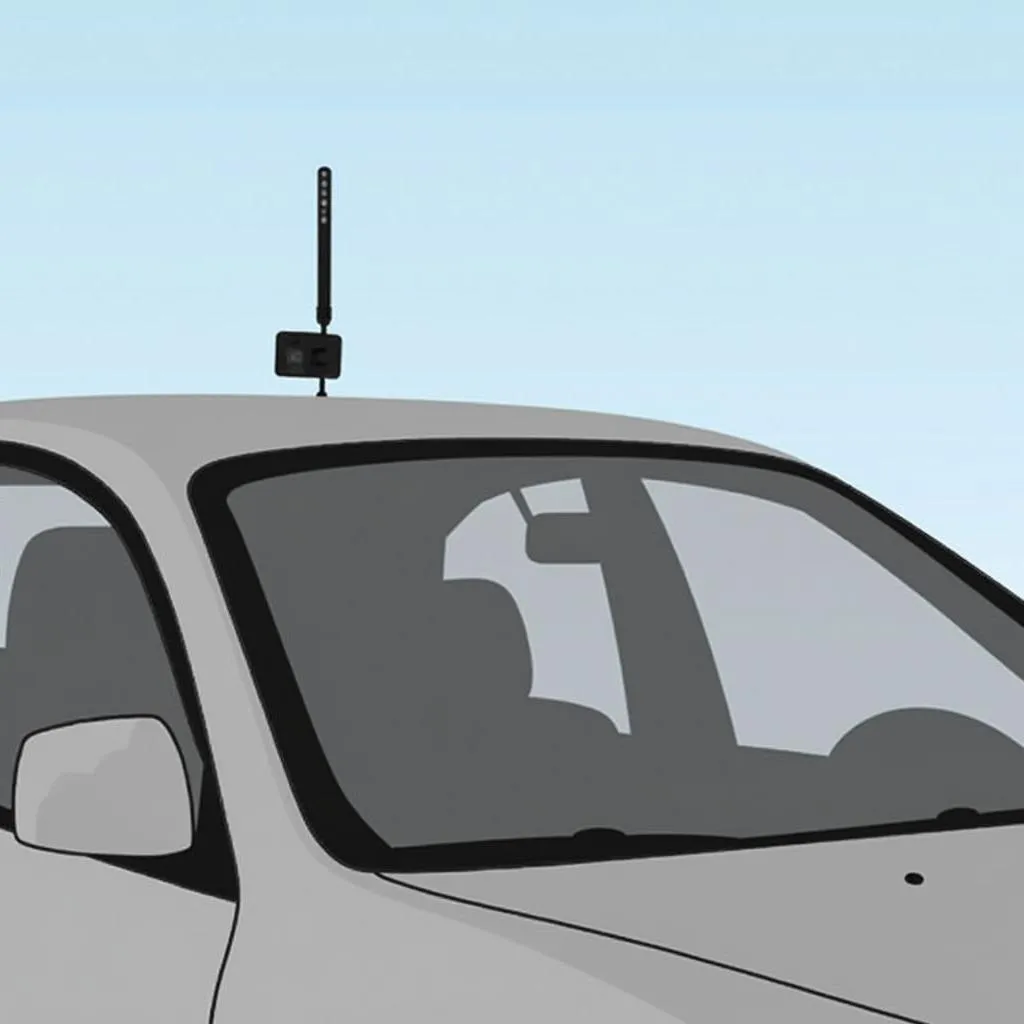Your car won’t start. The dashboard is flashing ominous warnings. You suspect your car’s anti-theft system is engaged, but what triggered it? This comprehensive guide will explore the common culprits behind an activated anti-theft mode and provide you with the knowledge to address the issue.
Understanding Anti-Theft Systems
Before we dive into triggers, let’s understand how these systems work. Modern vehicles often employ an immobilizer system, a critical component of the anti-theft mechanism.
The system typically operates by verifying the authenticity of your car key. A tiny chip within your key transmits a unique code to the vehicle’s computer system. If the codes match, the engine gets the green light to start. However, if the system detects an invalid or missing code, it interprets this as a potential theft attempt, activating the anti-theft mode and potentially immobilizing the engine.
Common Triggers for Anti-Theft Mode
1. Weak or Dead Car Battery
One of the most common yet overlooked triggers is a weak or completely drained car battery. “A low battery can disrupt the communication between your key and the immobilizer system, causing the system to misinterpret the signal and trigger the anti-theft,” says automotive electronics expert, Dr. Emily Carter, author of “Troubleshooting Modern Vehicle Electronics.”
2. Faulty Ignition Switch
The ignition switch is another usual suspect. Over time, the electrical contacts within the ignition switch can wear out or become damaged. This can disrupt the signal transmission to the immobilizer, leading to a false alarm.
3. Malfunctioning Key Fob
Modern car keys, especially key fobs with built-in transponders, play a crucial role in disarming the anti-theft system. If the battery inside your key fob is running low, the signal it sends to your car might not be strong enough to deactivate the immobilizer, thereby triggering the alarm. Similarly, a damaged key fob or a faulty transponder chip can also lead to communication errors, activating the anti-theft system.
4. Aftermarket Installations
Adding aftermarket car alarms, remote starters, or any modifications to your vehicle’s electrical system, especially if not done professionally, can sometimes interfere with the immobilizer system, causing unexpected anti-theft activations.
5. Steering Wheel Lock Malfunction
Some vehicles come equipped with a steering wheel lock that engages as part of the anti-theft system. If this lock malfunctions or isn’t disengaging properly, it might be interpreted as a forced entry, triggering the anti-theft mode.
Identifying Anti-Theft Mode Activation
Recognizing that your car’s anti-theft system is engaged is the first step toward resolving the issue. Here’s what to look for:
- Rapidly Flashing Security Light: A blinking or illuminated security light on your dashboard is often the most telling sign.
- Unusual Clicking Sounds: You might hear unusual clicking noises coming from the engine bay or steering column as the system attempts to engage or disengage.
- Engine Cranks but Won’t Start: This is a classic symptom where the engine tries to start but fails due to the immobilizer preventing fuel delivery or ignition.
Troubleshooting and Solutions
If you suspect your anti-theft system is the culprit, don’t panic! Here are a few steps you can take:
-
Check Your Battery: Ensure your car battery has sufficient charge. Jump-starting the car can often temporarily bypass the issue if a low battery is the culprit. However, a thorough battery check is recommended.
-
Inspect Your Key Fob: Replace the battery in your key fob. If you suspect a faulty chip or damage, contacting your dealership or a qualified locksmith for a replacement or reprogramming might be necessary.
-
Try a Spare Key: If you have a spare key, try using it to start the vehicle. This can help determine if the problem lies with your primary key.
-
Steering Wheel Check: Gently try turning the steering wheel left and right while simultaneously turning the ignition key. This can sometimes help reset a jammed steering wheel lock.
-
Professional Diagnostics: If the issue persists, consider tools like those offered by Cardiagtech for professional-level diagnostics and troubleshooting. These tools can read your vehicle’s computer system for error codes related to the anti-theft system, providing specific insights into the problem.
FAQs
Can I disable the anti-theft system myself?
While it might seem tempting, tampering with your car’s anti-theft system is not recommended. It can void your warranty and potentially lead to more significant electrical issues.
How much does it cost to fix an anti-theft system problem?
The cost varies depending on the root cause. A simple battery replacement could be inexpensive, while replacing a faulty ignition switch or key fob programming can be pricier.
How can I prevent anti-theft system problems in the future?
Regular vehicle maintenance, including battery checks and inspections of your keys and ignition system, can go a long way in preventing future issues.
What tools are helpful for diagnosing anti-theft issues?
Advanced diagnostic tools like those available from Cardiagtech can read your vehicle’s specific error codes, providing valuable information for troubleshooting.
Need Further Assistance?
Dealing with an activated anti-theft system can be frustrating. If you’re unable to resolve the issue, it’s always best to seek professional help.
For expert guidance and solutions, consider reaching out to CARDIAGTECH. Our team specializes in automotive diagnostics and can assist with identifying and resolving the root cause of your anti-theft system woes.


